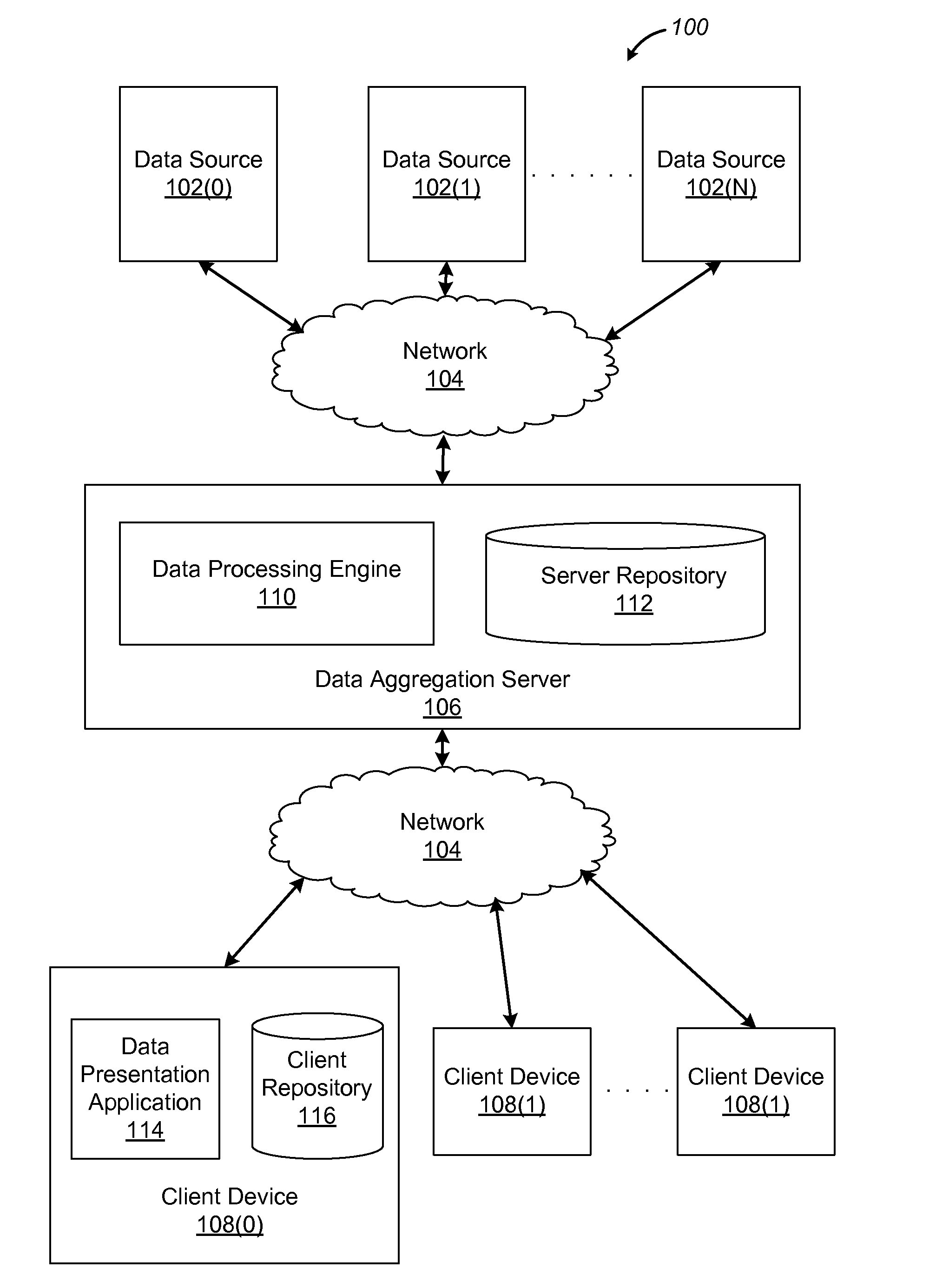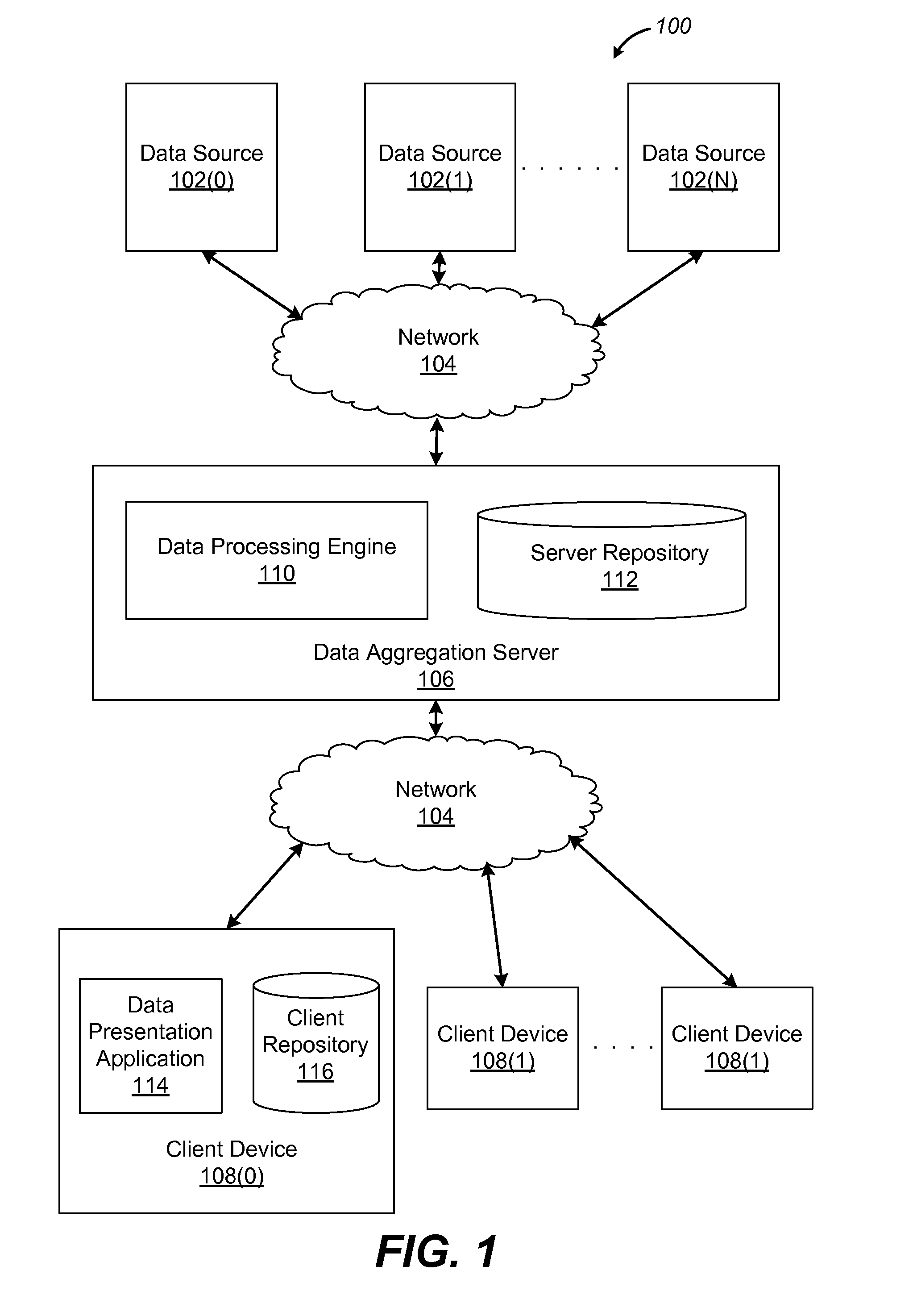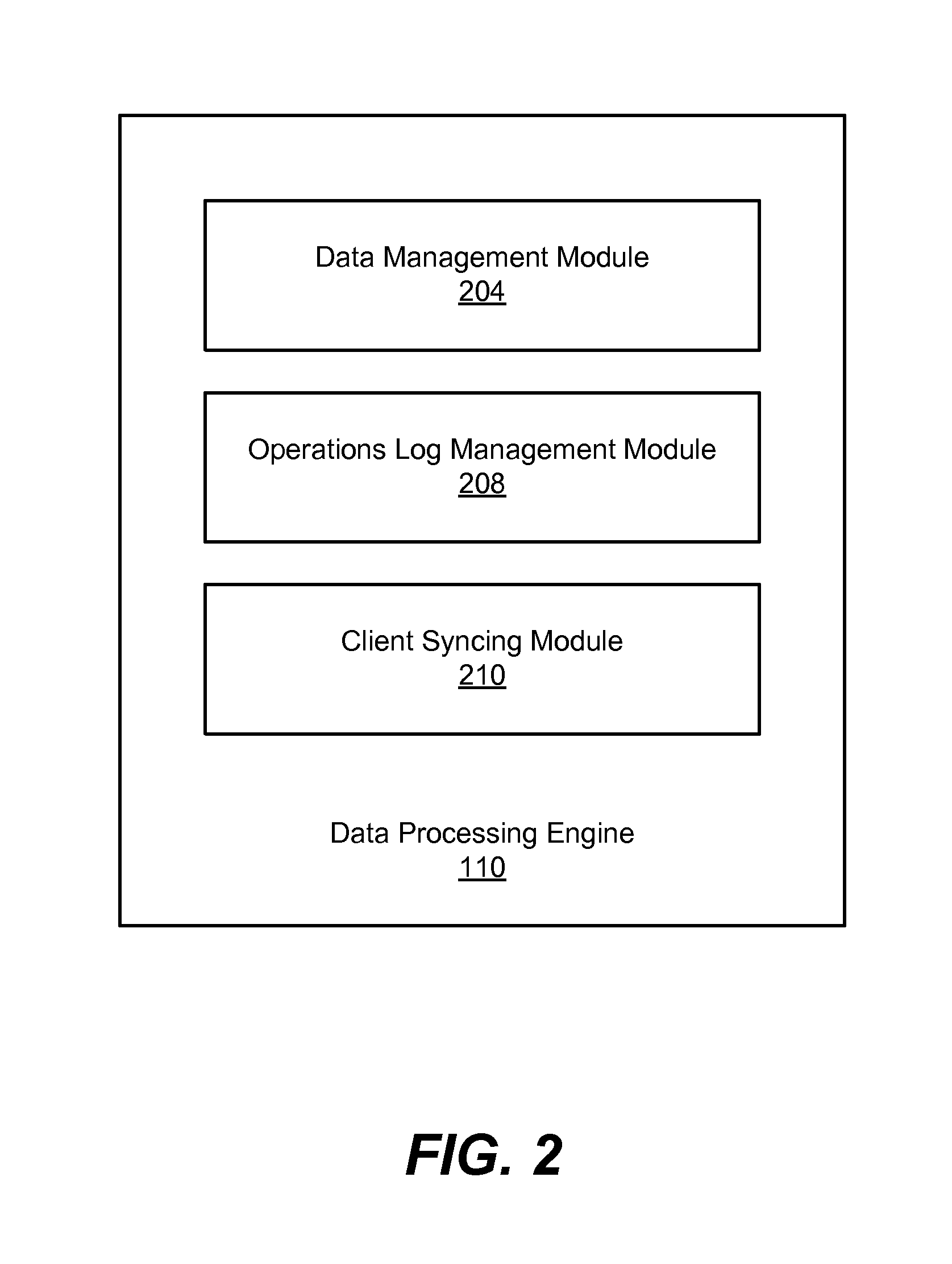Storing and processing data organized as flexible records
a data and flexible technology, applied in the field of data management, can solve the problems of inconvenient data movement operations, inconvenient data movement, and inability to store and process data in a flexible manner, and achieve the effect of reducing the cost of data movement operations, and reducing the number of records
- Summary
- Abstract
- Description
- Claims
- Application Information
AI Technical Summary
Benefits of technology
Problems solved by technology
Method used
Image
Examples
example processing
Overview
[0018]FIG. 1 illustrates one embodiment of a computing environment 100 configured to coalesce data from several sources and provide the coalesced data to client applications. As shown, the computing environment 100 includes data sources 102(0) . . . 102(N) (generally, data sources 102), a data aggregation server 106 and a client device 108. The data sources 102, the aggregation server 106 and the client device 108 are communicatively coupled to one another through a network 104. Although only one aggregation server 106 and client device 108 are illustrated, the computing environment 100 may include multiple instances of each entity. Moreover, some of the functions ascribed to the aggregation server 106 may be performed by the client device 108 and vice versa. Other entities may also be coupled to the network 104.
[0019]Data sources 102 are part of a system that manages and stores data associated with individuals or groups of individuals. For example, a data source 102 may be ...
example
Contact Information Aggregation
[0045]The techniques described above may be used to aggregate contact information dispersed across multiple contact data sources. Each contact data source may store individual contact information according to a different schema.
[0046]FIGS. 6A-6C illustrate an example of contact information aggregation using the techniques described in conjunction with FIGS. 1-5. Specifically, FIG. 6A illustrates a database table 602 in a contact data source. The table 602 has a specific schema, where each record in the table, such as record 604, stores information about a particular contact. The information includes a first name, a last name, a date of birth, a state and a phone number. A different contact data source may store contact information in a different structure or may have a subset or a superset of the information stored in the table 602.
[0047]The data management module 202 retrieves contact information stored in the table 602 from the contact data source. T...
PUM
 Login to View More
Login to View More Abstract
Description
Claims
Application Information
 Login to View More
Login to View More - R&D
- Intellectual Property
- Life Sciences
- Materials
- Tech Scout
- Unparalleled Data Quality
- Higher Quality Content
- 60% Fewer Hallucinations
Browse by: Latest US Patents, China's latest patents, Technical Efficacy Thesaurus, Application Domain, Technology Topic, Popular Technical Reports.
© 2025 PatSnap. All rights reserved.Legal|Privacy policy|Modern Slavery Act Transparency Statement|Sitemap|About US| Contact US: help@patsnap.com



